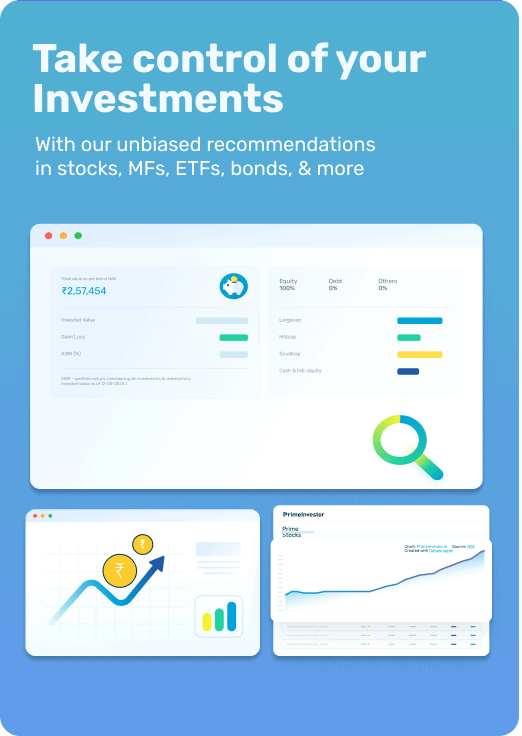
Gold took most Indian forecasters by surprise in 2019 by serving up a 22 per cent return. At the beginning of the year, most folks had thrown in the towel on the precious metal after it had delivered a less than a savings bank return (3.8 per cent CAGR) in the previous five years.
But an unexpected cocktail of global events has sparked a rapid catch-up in gold prices in the last six months – the US-China trade wars, the US yield curve inverting signalling a recession, the drone hit on Saudi Aramco’s oil facilities and US-Iran hostilities threatening an oil price shock. While the fear factor from these events has ignited gold, the rising tide of global liquidity from the US Fed returning to rate cuts and QE, has fanned the rally.
After recent gains, trailing gold return rate for Indian investors have begun to look respectable once again. As of January 16, 2020, gold investors were sitting pretty on a 11 per cent CAGR for 3 years, 8 per cent for 5 years and nearly 9 per cent for 10 years, a record many debt funds will struggle to match.
But then, gold price behaviour in 2019 is also a good illustration of why trying to forecast gold returns for any given year is an exercise in futility. Gold delivers gains when unforeseen events batter all other asset classes – stocks, bonds, commodities and currencies, ‘unforeseen’ being the operative word here. Therefore, the frank answer to the question in the headline is – We don’t really know. But lest you stop reading here and hurl brickbats at us for click-baiting you, we do have insights how you should approach the precious metal as an investment.
Fundamentals evenly balanced
Unlike bonds or equities which are valued based on their underlying cash flows, gold does not offer any regular cash flows to investors. Its ‘valuation’ thus rests entirely on its demand-supply equation at any given point in time.
There are literally dozens of conflicting factors pulling at global gold demand and supply. Jewellery buyers, bar and coin investors, Exchange Traded Funds and central banks looking to own gold in their reserves, are the key entities who make up the demand side of the equation. But they don’t act in tandem. When gold prices rise, jewellery buyers cut back, while bar/coin/ETF buyers step up their purchases. When gold prices fall, jewellery buyers make a beeline for it while investors back off. On the supply side, gold miners and jewellery holders recycling their old gold are key contributors. They tend to step up supplies when there’s a sustained rise in gold prices.
Data from the World Gold Council tells that, with these dynamics playing out, after being in deficit for three years until 2013, global gold supply has consistently exceeded demand in the last six years. In the first nine months of 2019 (the latest available data), demand and supply growth for gold were neck-and-neck at 3.6 per cent and the world gold market was in surplus by 216 tonnes. Clearly, there’s not much in the demand-supply equation of gold to drive its prices higher in 2020. But speculative forces often propel gold prices even when the fundamentals are not strictly supportive. This makes gold price moves in 2020 mainly contingent on how the fear factor plays out on geopolitical tensions and the state of the global economy.
Here, it is significant that one class of investors who know a great deal about the global economy have been prodigious accumulators of gold in the last two years. Global central banks upped their yearly gold purchases by 73 per cent in 2018 (378 tonnes to 656 tonnes) and went on to add another 11 per cent (547 tonnes) in the first nine months of 2019.
Timing matters
One peculiarity of gold as an investment is that it does nothing for long periods but makes up through stellar gains delivered in short bursts. This makes point-to-point returns a poor way to gauge the return potential of gold. Running a rolling-return analysis on domestic gold prices since 1982 (Source: World Gold Council Goldhub) shows that gold has been a good asset to own for Indian investors in the last four decades.
Gold in Rupee terms has averaged a 9.2-9.3 per cent CAGR for Indian investors who held it for 3 and 5-year periods and a 10 per cent return for 10-year periods, based on rolling returns. This return record makes a case for allocating to gold in your portfolio.
But the healthy averages also mask the fact that gold investments are quite prone to extremes. In its worst 5-year period since 1982, gold delivered a negative 6 per cent CAGR to its investors. In its worst 10-year period, it scrounged up a less than 2 per cent CAGR. These phases of poor performance were offset by the best 5- and 10-year periods, when gold delivered CAGRs of 27 per cent and 21 percent respectively.
Gold’s price history suggests that this is one asset where timing the market matters more than time in the market. If you can build your gold allocations during an extended period of negative returns (like 1996-2001 or 2016-2018), it helps you ensure a better investment outcome.
Probability of losses
Many Indian investors have the mistaken notion that gold prices can head only one way – Up. But the rolling return record of gold suggests that it does deliver losses on occasion. Over 3-year holding periods, Indian gold investors made losses about 16 per cent of the time in the last four decades. Over five-year holding periods, it made losses about 13 per cent of the time. Those who held it for 10 years though have never made a loss.
While global investors have a one in three chance of losses from gold even over 10 years, the experience is vastly better for Indian investors because they tend to gain not only from sporadic global events that send gold prices shooting up, but also from the Rupee’s steady depreciation against the dollar. Rupee depreciation has added about 4-5 per cent annually to the Indian investor’s returns from gold over the last four decades.
Many Indian investors have the mistaken notion that gold prices can head only one way - Up. But the rolling return record of gold suggests that it does deliver losses on occasion. Over 3-year holding periods, Indian gold investors made losses about 16 per cent of the time in the last four decades. Over five-year holding periods, it made losses about 13 per cent of the time. Those who held it for 10 years though have never made a loss.
Going forward, the pace of Rupee depreciation could slow. But as long as India runs a substantial current account deficit, the depreciation itself is likely to continue. In addition, periods of global turmoil or low growth in India often see foreign investors pull out money from Indian stocks and bonds, triggering Rupee depreciation. This adds to gold returns for Indians when the going gets tough.
How should you approach gold?
- All the above points suggest that there is a case for owning gold as a portfolio hedge, especially if you have higher allocation to equity and bonds.
- You should be aware that gold has a higher probability of negative returns even over 5-year periods, more than even equity. Hence, do not expect it to deliver even in the medium term.
- View it as an asset class that performs the function of portfolio insurance. It mostly does nothing, but can help a lot when adversity strikes.
- If your portfolio is made up wholly of government schemes or bank deposits, there’s less reason to own gold as the former acts as a good hedge with adequate returns
- Given its tendency to do nothing for long periods though, having a large gold allocation can weigh on your portfolio returns. Up to a 10 per cent allocation seems to work well as a portfolio insurance. This is best done by accumulating on dips.
- In short, gold performs the function of portfolio insurance. It mostly does nothing, but can help a lot when adversity strikes.
- If you are a Prime subscriber, you can view our Theme Park section for investment options to ride gold.
Read more about Gold Mutual Funds India here.
